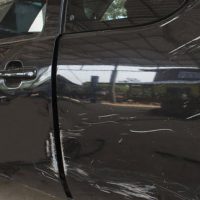Accidents when Merging on the Highway

Merging with traffic on the highway can be a terrifying experience. When traffic is heavy, there might not be any obvious room to scoot in and join the flow of traffic. Many drivers hesitate to actually stop at the foot of the on-ramp, but often there is no choice.
Traffic accidents when merging are more complicated than other wrecks. For example, there is often a dispute about who had the right of way. Did the vehicle trying to merge scoot in when there wasn’t space? Or did the other vehicle drive too fast and refuse to let another vehicle merge?
At Earnhart Law, our Delray Beach car accident lawyers have deep experience with sideswipe collisions. Let us review the circumstances and determine your legal right to compensation for your injuries.
Florida Law on Merging with Traffic
The Florida Driver’s Handbook lays out the rules to follow when merging onto the highway. It instructs drivers to check for openings while on the entrance ramp and to increase speed into the acceleration lane so that the driver can join traffic. Of course, you can only merge when it is safe to do so. If traffic is so heavy that you can’t merge, then you must stop, either in the acceleration lane or on the entrance ramp.
These rules make one thing clear: the duty to yield is on the vehicle trying to merge. If you don’t, and you scrape another vehicle, you are probably at fault.
However, that does not completely relieve the traffic already on the highway. Specifically, Fla. Stat. § 316.192 criminalizes driving in a willful and wanton manner without regard for the safety of others. This law would prohibit a driver already on the highway from taking a dangerous action that prevents a car from merging.
For example, imagine that Car A sees that a large space is available to merge on the highway and picks up speed to do just that. At the same time, Car B drives 20 miles over the speed limit and cuts off Car A.
Here, the driver of Car A has followed the rules: it was safe to merge and he attempted to. The driver of Car B, however, drove recklessly and caused a collision. In this example, the driver of Car B is probably to blame for the accident.
How an Attorney Can Help
Building a case for compensation requires solid proof of how the accident unfolded. If hired, we might interview witnesses who observed the collision. They could include passengers in the vehicles involved in the crash or other motorists who stopped after the collision. In some cases, we might even inspect the vehicles involved, which could yield up clues about how fast each car was going at the time of the wreck.
Please contact Earnhart Law today. Our Delray Beach car accident lawyers understand this is a difficult time. Negotiating with insurers is too confusing for most people to tackle alone. We can begin work on your case right away and fight to obtain fair compensation. Call 561-265-2220 today. Our consultations are free.
Resource:
leg.state.fl.us/Statutes/index.cfm?App_mode=Display_Statute&URL=0300-0399/0316/Sections/0316.192.html
